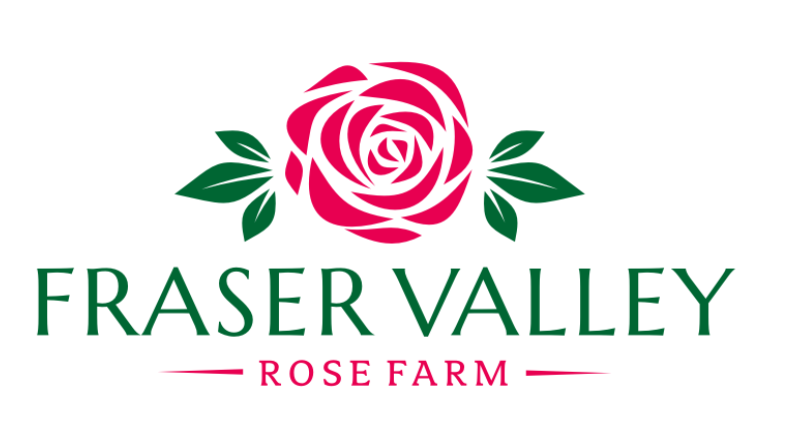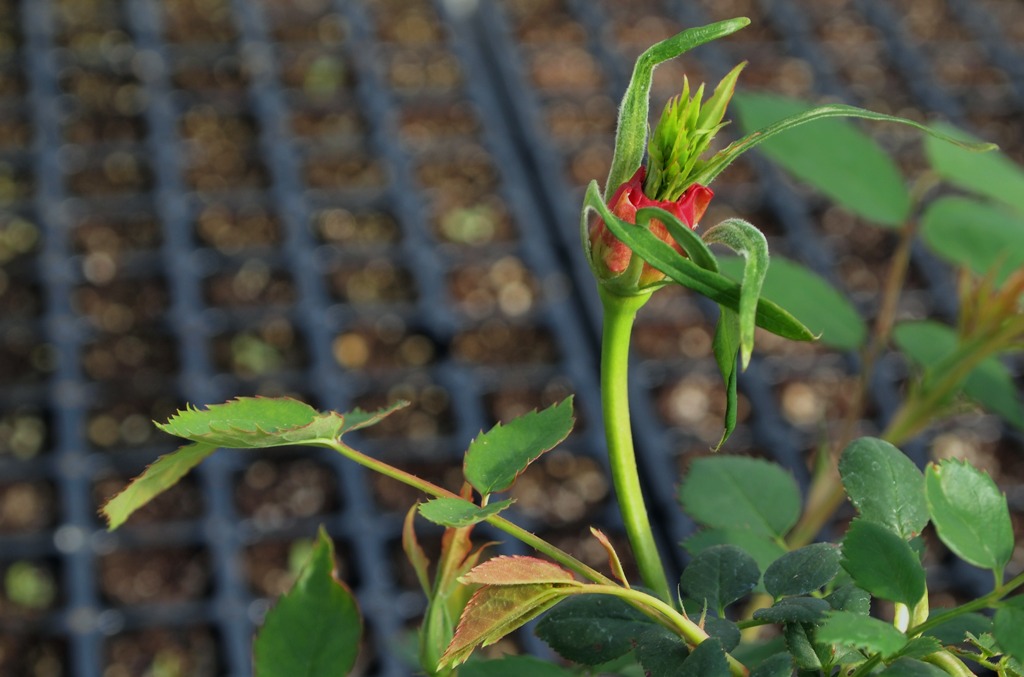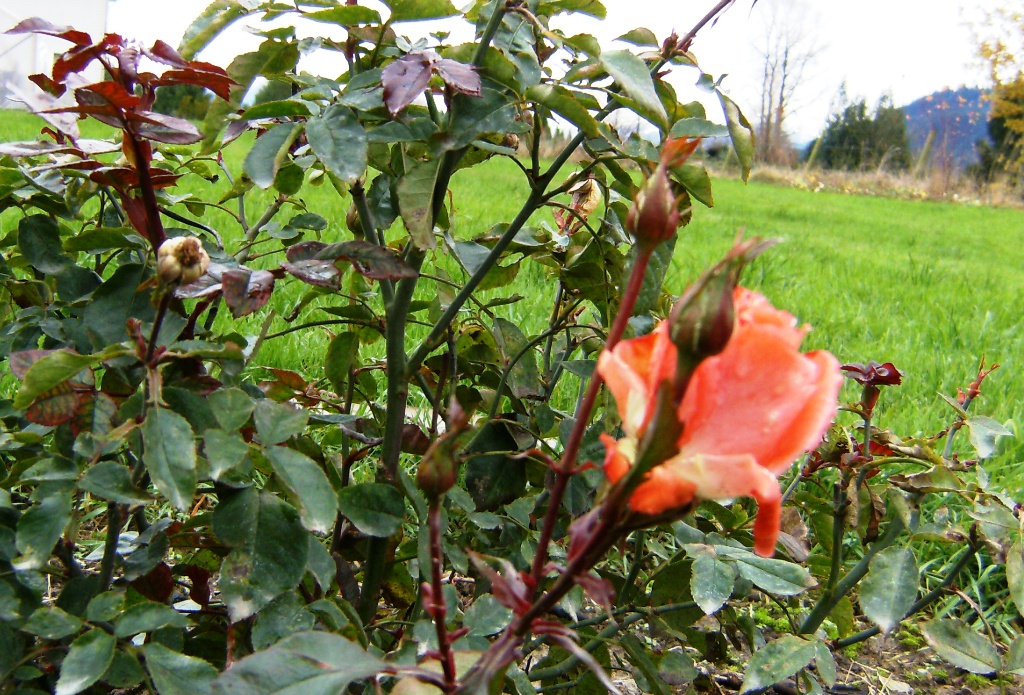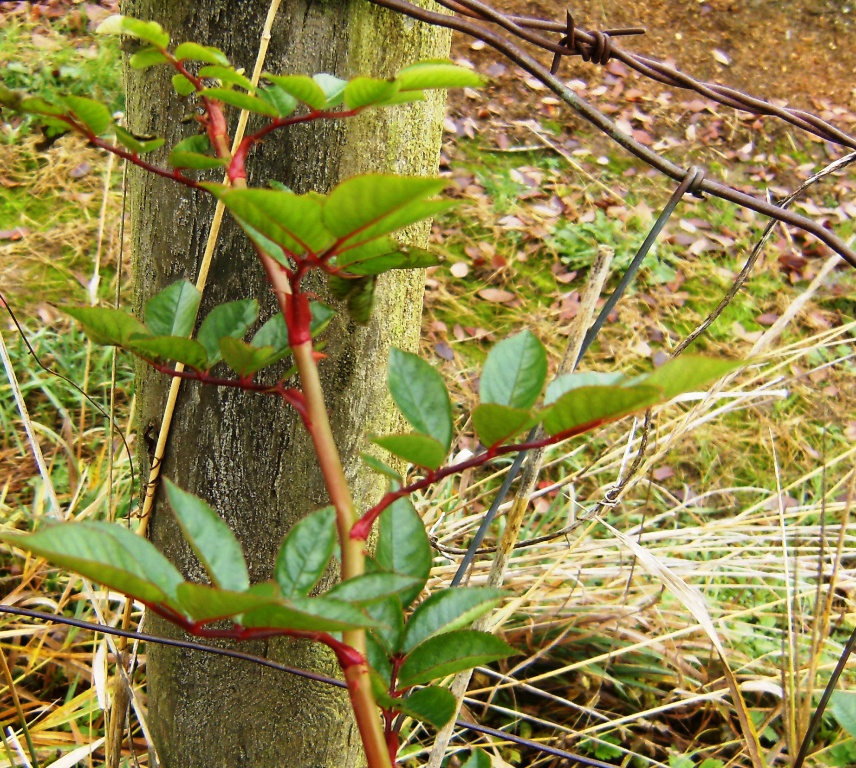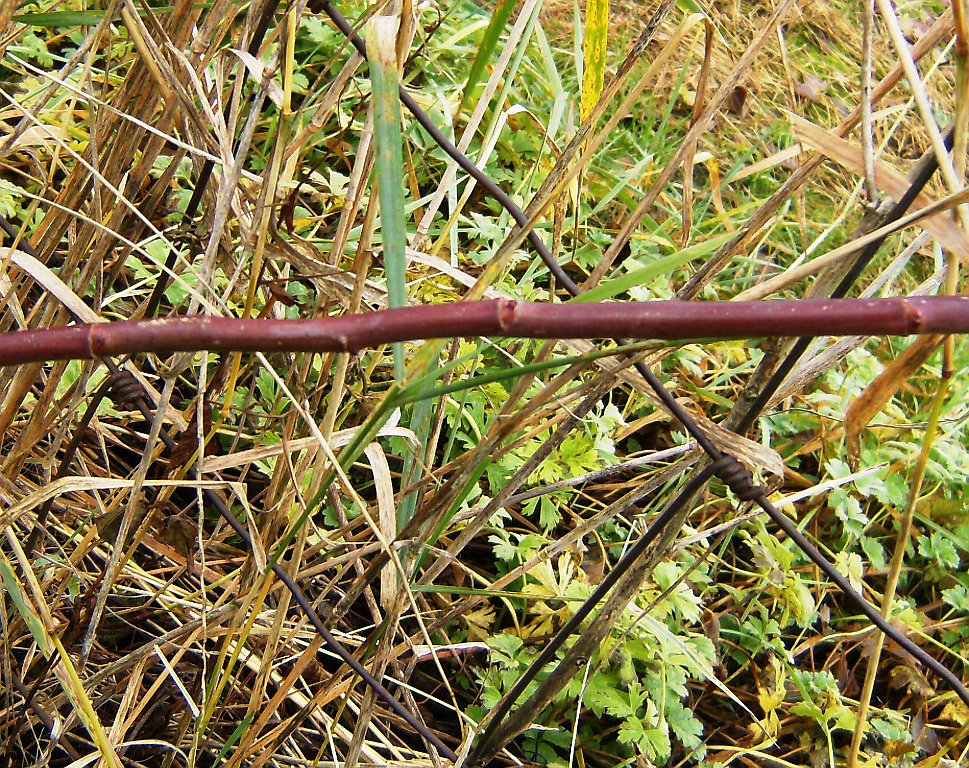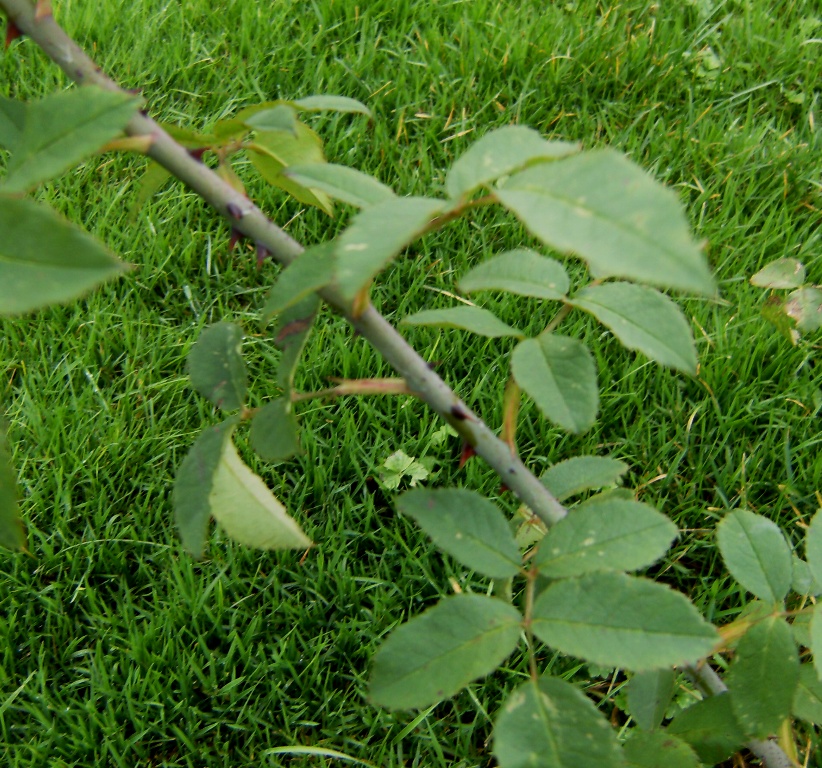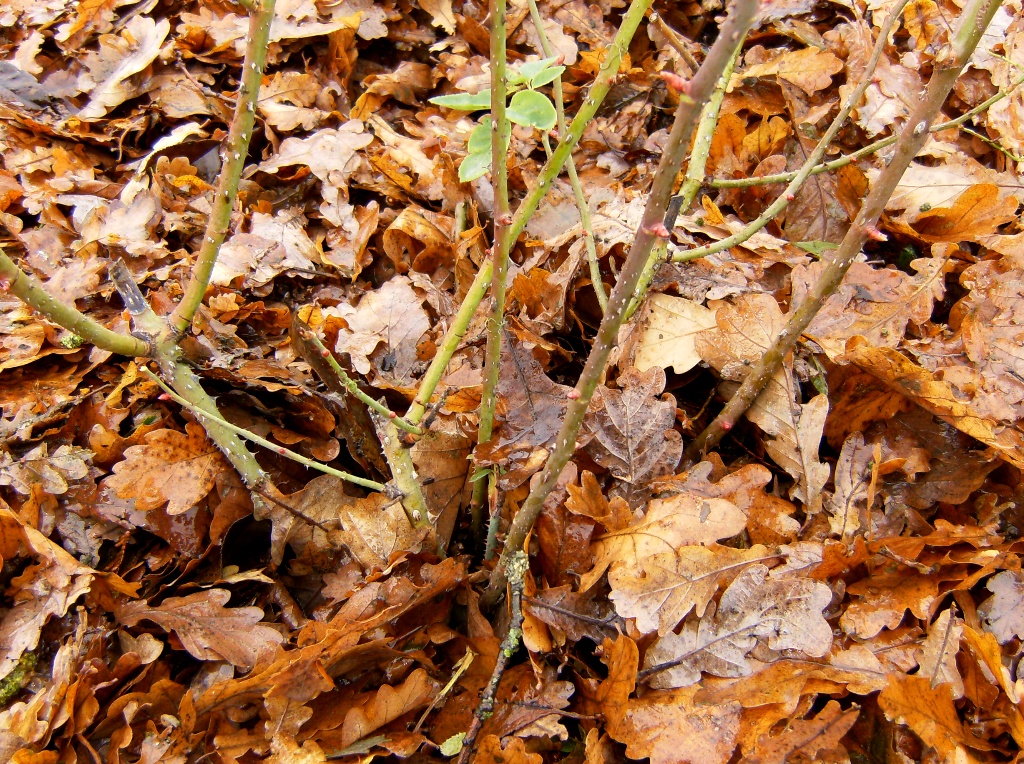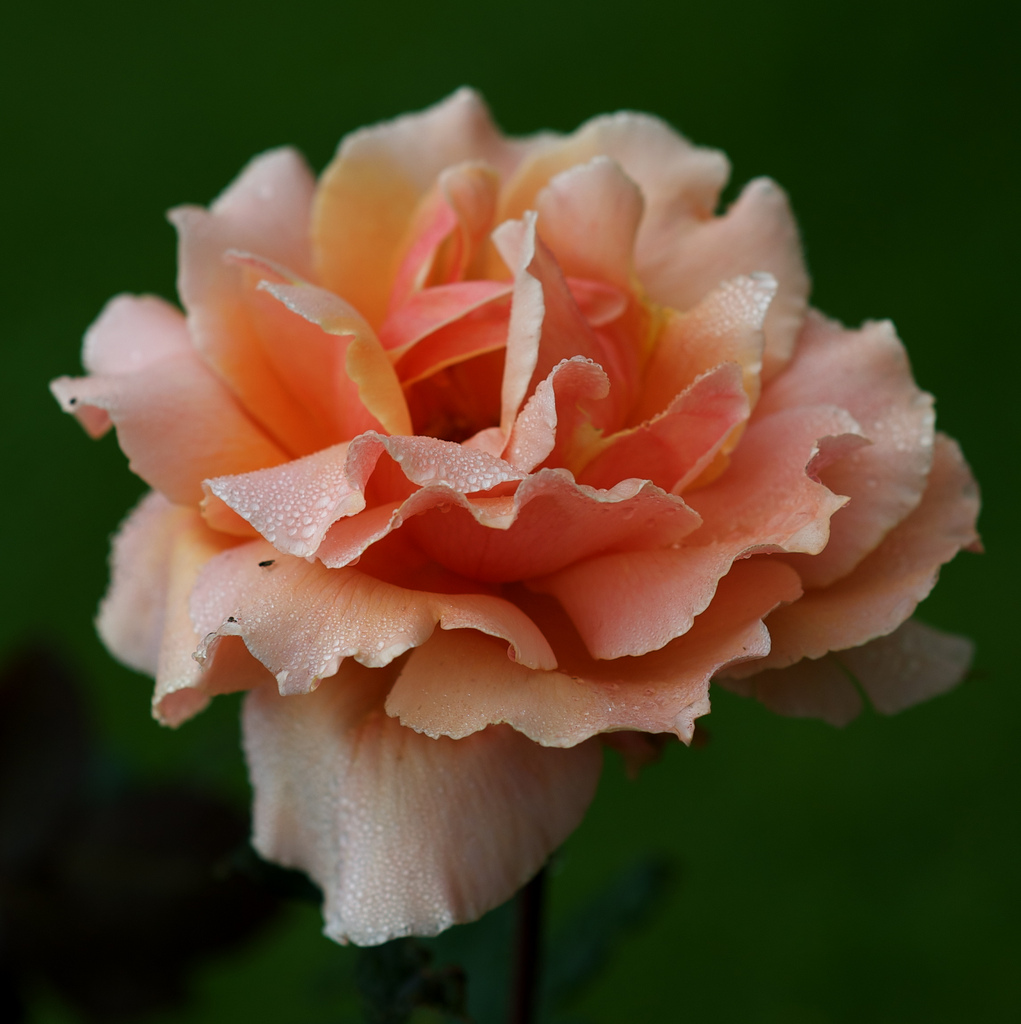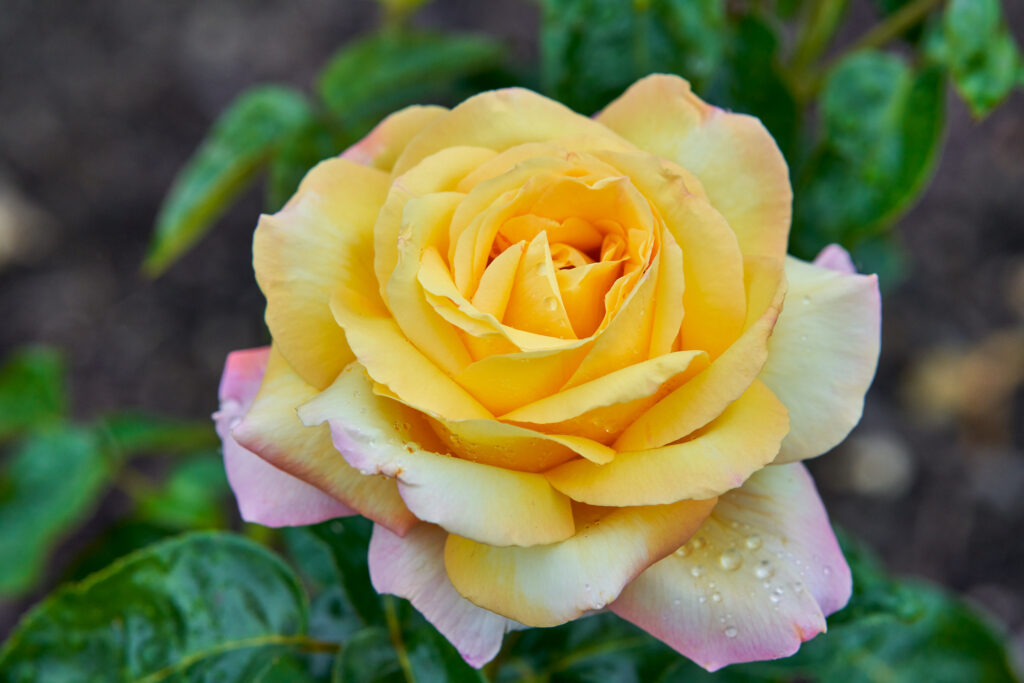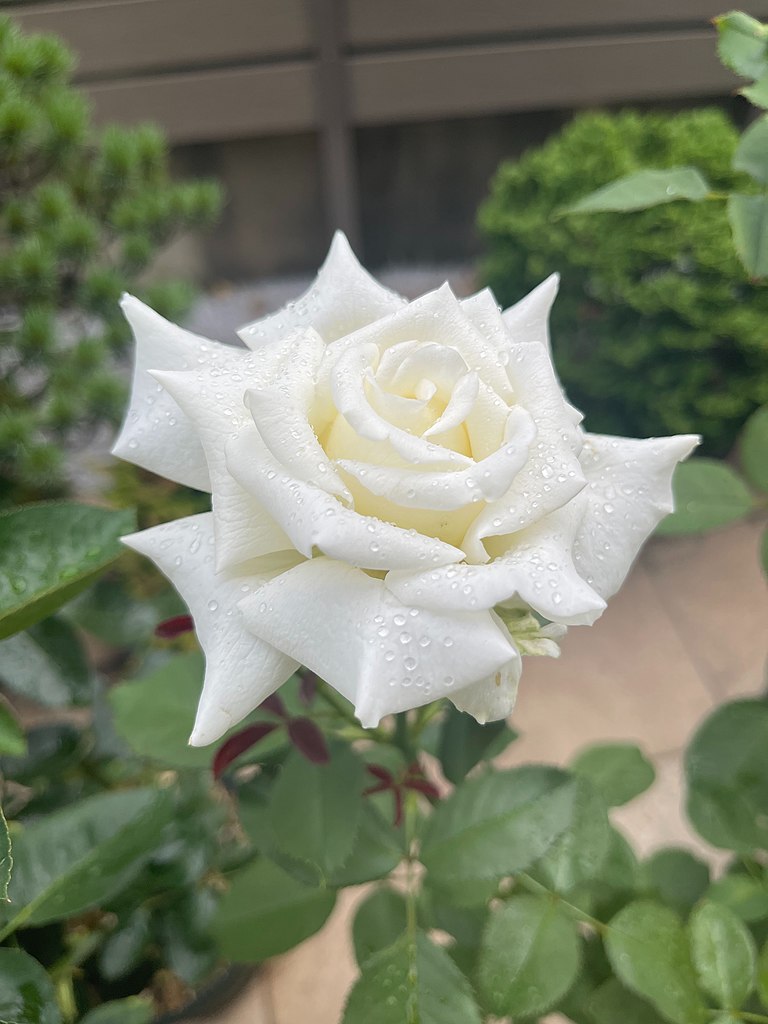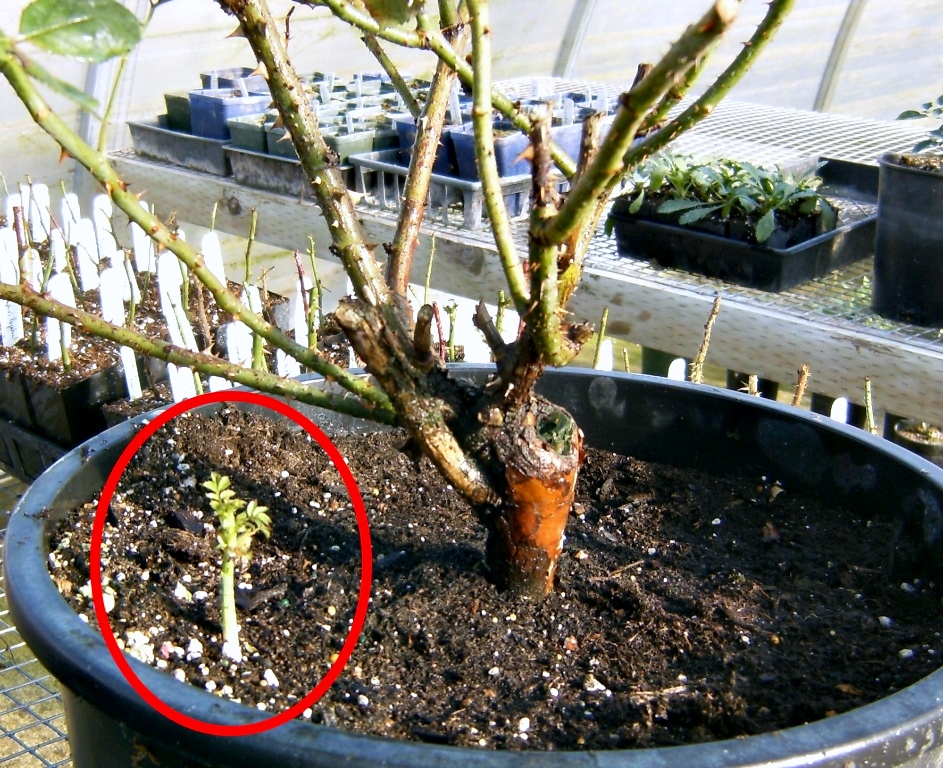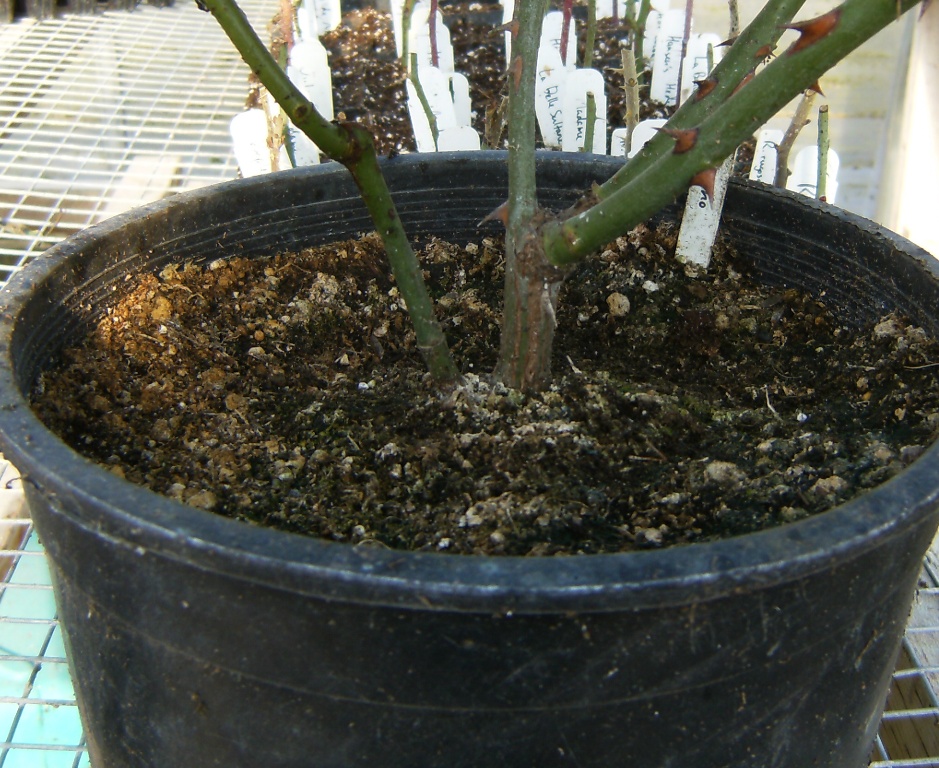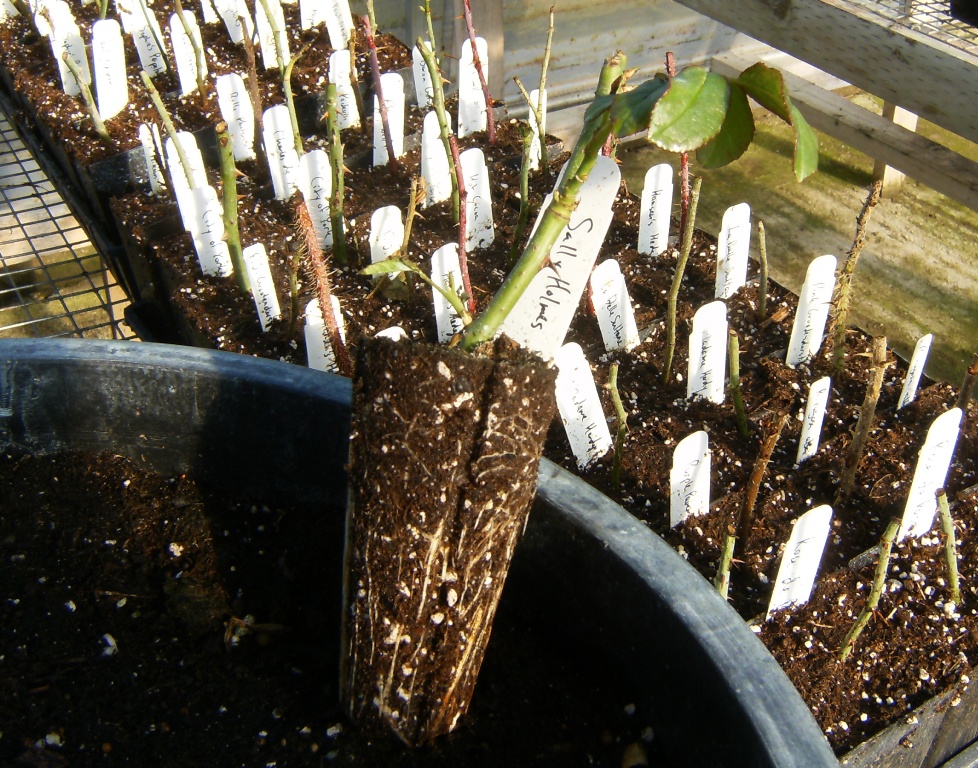Hey… this is kinda cool.
It’s late March, so it’s not completely unexpected that ‘Sophie’s Perpetual’ is beginning to bud up. It’s usually my first rose to do so. I saw ‘Scarlet Moss’ racing to keep up this year, but then Sophie did this:
Freaky. When I looked this one up, it seems it’s a deformity called “proliferation”. The green growth inside of the flower makes it look like the plant wants to grow another flower bud inside the first. It’s pretty interesting looking in this case because ‘Sophie’s Perpetual’ has such long sepals that they really jut out from the flower bud.
Sometimes roses do funny things. Last year I found ‘Caramba’ with a whole bunch of buds that looked like they’d had the ends bitten off. At first I thought that a rabbit had done exactly that, but closer inspection showed that the rose wasn’t chewed. It was like the flower had just stopped short of growing full petals. It’s a disorder called “bullheading”. I wish I’d taken some pictures of it. “Bullheading” is apparently related to cool temperatures, and it wouldn’t surprise me if the “proliferation” seen on ‘Sophie’s Perpetual’ were related to cool temperatures as well.
Anyhow, I thought I’d share this coolness. Now if I could only do this on purpose…
